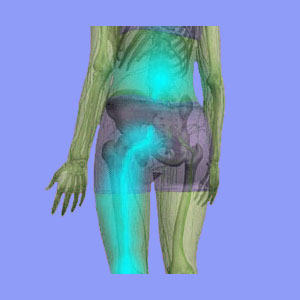
Back and leg pain is a very commonly experienced combination of symptoms which are both debilitating and incredibly scary. Few, if any, musculoskeletal conditions can enact such powerful and sudden effects on a person’s overall physical functionality and emotional state.
Some patients might have predominately lower back and buttocks pain with occasional bouts of leg and foot pain. Other patient’s symptomologies might focus more on the legs and less on the actual back. A great number of patients have simultaneous chronic sciatica and back pain expressions which govern their very lives. I know this fate well, since I have suffered it for decades, since the age of 16.
This article will separate the myths from the facts concerning sciatic nerve symptoms. We will discuss why sciatica and back pain are such widespread health issues and why the majority of affected patients can not find adequate or lasting relief.
Sciatica Back and Leg Pain
Sciatica is an epidemic condition affecting the majority of adults at some point in their lives. The medical system has profited greatly from sciatica treatments, but has not been able to offer most patients anything more than low level symptomatic relief. Statistically, very few sciatica patients who experience symptoms for more than 6 to 12 months will ever find a real cure.
The problem with sciatic nerve pain is not that it is impossible to treat. No, the actual issue preventing most people from finding lasting sciatica relief is simply an incorrect diagnosis. A great many patients with lower back pain syndromes are misdiagnosed, leading them on a wild goose chase in finding appropriate treatment options. In essence, they pursue treatments directed at a mistakenly identified causation, which explains why these treatments rarely produce good curative results.
Back Pain Combined with Leg Pain Fact and Fiction
There are a number of interesting facts and myths about lower back and sciatica pain which many patients do not know. Below are some perfect examples which every diagnosed patient must understand:
MYTH – Spinal abnormalities, such as degenerative disc disease and osteoarthritis are the major sources of back pain.
FACT – While these process can cause pain, these scenarios represent the exception to the asymptomatic rule. These degenerative processes are normal and universal.
MYTH – All sciatica is caused by a pinched nerve in the lower back.
FACT – Pain and related neurological symptoms in diverse areas of the anatomy are virtually impossible to blame on a single spinal pinched nerve, such as those enacted by a herniated disc. Regardless, these variable and far-ranging pain conditions are typically blamed on a spinal scapegoat abnormality.
MYTH – Sciatica is easily diagnosed, but very difficult to cure.
FACT – Sciatica is often easy to resolve once the actual source of symptoms has been determined. Many unresolved sciatic nerve complaints are due to a misdiagnosis of the actual cause of pain.
MYTH – Sciatica needs to be treated by a medical doctor or chiropractor. Not doing so can lead to worse symptoms or even permanent spinal damage.
FACT – Statistics show that lower back pain patients who never seek medical treatment recover faster and more completely than patients who receive any form of treatment. This may be due to the nocebo effect of the diagnostic process, which is known to escalate and perpetuate sciatica symptoms, or may be the result of the economic motivations of their caregivers. After all, the longer a patient remains in care, the more money will be generated for the practice.
MYTH – Sciatica often requires surgery to enact a real cure.
FACT – Surgical interventions offer abysmal results for resolving sciatica and back pain, in general. In fact, there is a very common disorder named for these horrible results: failed sciatica surgery syndrome.
Back and Leg Pain Intervention
Finding your way through the medical system can be a daunting and difficult task. While some patients are correctly diagnosed and successfully treated, this does not represent the typical experience of patients with chronic back pain. For these poor souls the process usually goes more like this…
Patient is in pain and goes to the doctor.
Doctor does exam and complete imaging study.
Doctor makes a diagnosis.
Patient begins conservative treatment.
Treatment provides minor and temporary relief.
Symptoms escalate and patient receives more treatments.
All therapy options fail, some miserably.
Patient is fearful and in progressively worse pain.
Pain becomes a major factor in patient’s life.
Patient is fed up and goes to other doctors for an answer.
However, patient maintains original diagnosis.
Patient repeats entire unsuccessful treatment process.
Patient goes to see a surgeon.
Patient is very scared, but feels an operation is the only option.
Surgery is performed.
Patient has terrible pain, but looks forward to recovery.
Patient recovers from surgery but continues to have back pain.
In fact, the pain is worse than ever.
The patient is desperate.
The surgeon will not return any of the patient’s calls.
What went wrong?
My Sciatic Nerve Pain
The above example is an extreme case, but at least represents part of the story for most sciatica patients. Outside of the surgery part, this is exactly what happened to me for decades. I was bounced all over the back pain treatment industry with no success. I spent a fortune on therapies which did nothing except put me in debt. I wished, hoped, prayed and even begged for a cure to no avail.
Is it any wonder I am so upset over the state of the back pain industry and the way it manipulates normal and universal spinal structural conditions to take the blame for chronic pain? You can be the judge of that one for yourself. Fortunately for me, I eventually cured my own pain using the same practices which went on to form our proprietary pain relief program.
To summarize, I highly encourage you to read more research articles on this website, and others, in order to better prepare yourself for what may just be the battle of your life. This fight against back and leg pain is commonly fought, but rarely won. Increase your odds for victory; improve your knowledge base and become ever more active in your own healthcare choices.






